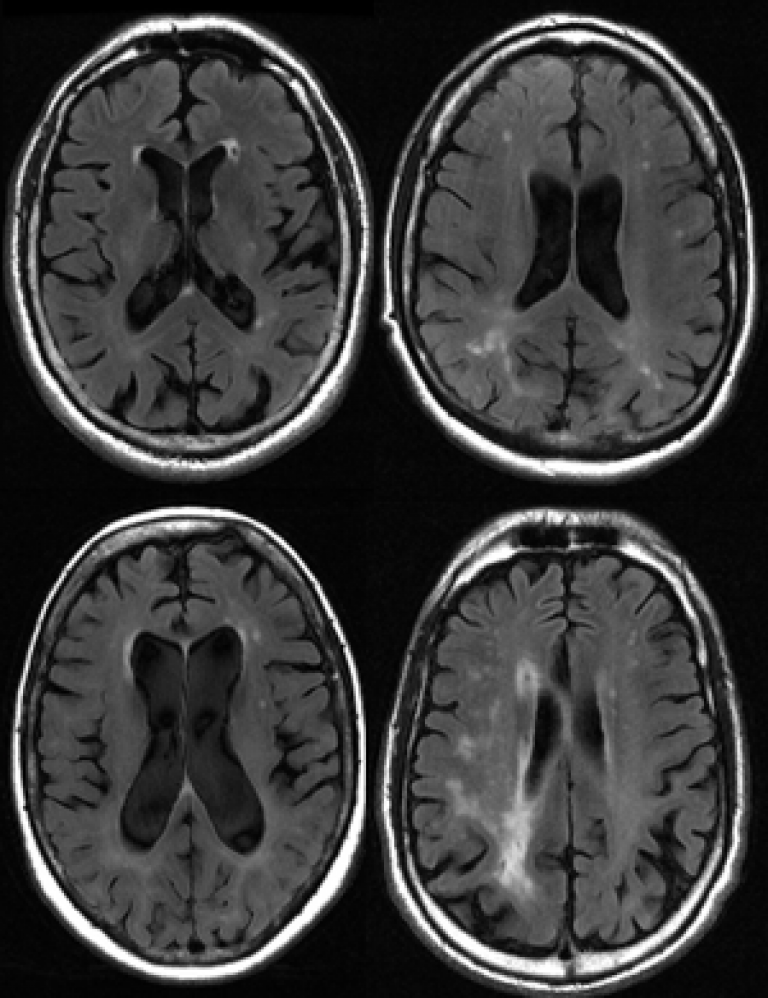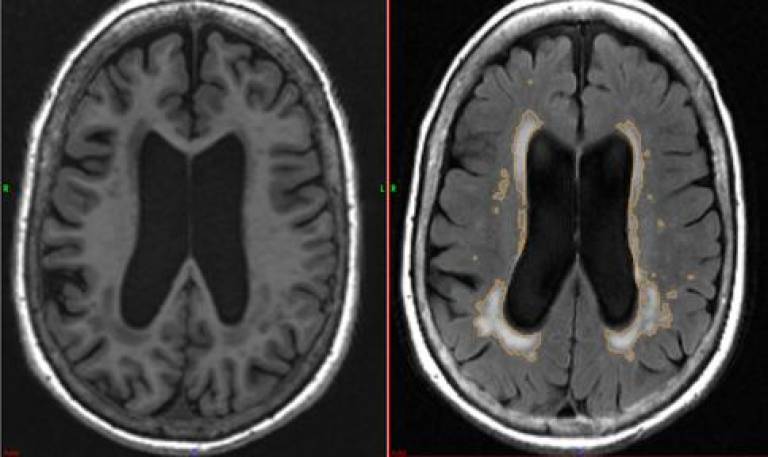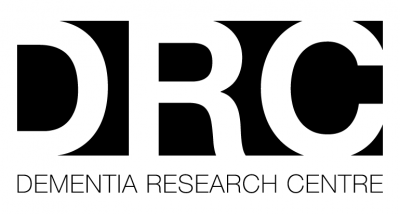What is White Matter Disease?

Within the Dementia Research Centre, a team of researchers focus on understanding how disease of the brain’s white matter is related to ageing and dementia.
White matter is a structured network of cells which act like cables to link up communicating brain regions. This linkage of different brain regions enables high level processes such as thought, movement and decision-making to occur. During ageing these cells can become disorganised, diseased and dysfunctional.
The brain images here show white 'blobs' that are characteristic of white matter disease. These blobs are common in people with heart disease or problems with blood vessels and might be present with or without any cognitive issues.
White matter abnormalities can lead to disruption of brain circuits and contribute to cognitive symptoms similar to those caused by Alzheimer’s disease.
Why do we study it?
A large number of people living with dementia will have Alzheimer’s disease and white matter disease at the same time. Understanding the white matter disease component of their dementia might lead to improved or specific treatments. This is because white matter disease is in part linked to common problems with the heart and blood vessels caused by smoking, diabetes, high blood pressure and high cholesterol. These are things we can prevent or treat.
How do we study it?

We use magnetic resonance imaging (MRI) to give us a window into the changes which happen to the brain in each of our participants. One type of white matter disease can be seen clearly on a type of MRI scan called T2 FLAIR. These scans show the disease as bright white spots or splodges which are hence called white matter hyperintensities (see below, right). We look at the volume and location of white matter hyperintensities in a person’s brain whilst studying their cardiovascular risk profile; which means looking at markers of vascular and cardiovascular health like high blood pressure. We hope to understand how problems in the white matter can interact with Alzheimer’s disease, by also looking at the signs of Alzheimer’s disease progression; such as brain shrinkage and levels of hallmark Alzheimer proteins: amyloid and tau.

This picture shows two images of the same participant’s brain collected using different MRI techniques. The white matter disease appears as dark blobs on the T1 image (left) and as white blobs on the T2 FLAIR image (right). These two different ways of viewing the brain mean we can be more confident about obtaining accurate volumes of diseased tissue through segmentation, which you can see outlined in orange in the right image.
 Close
Close


